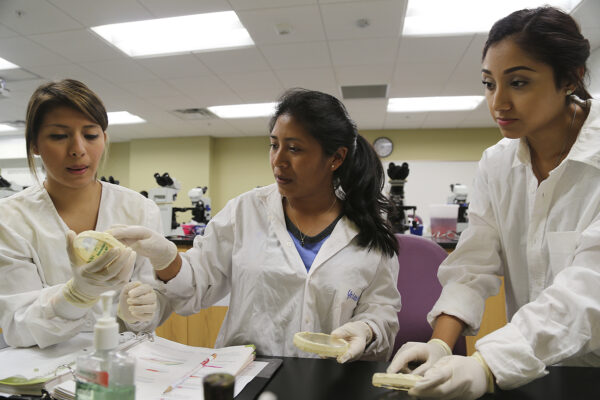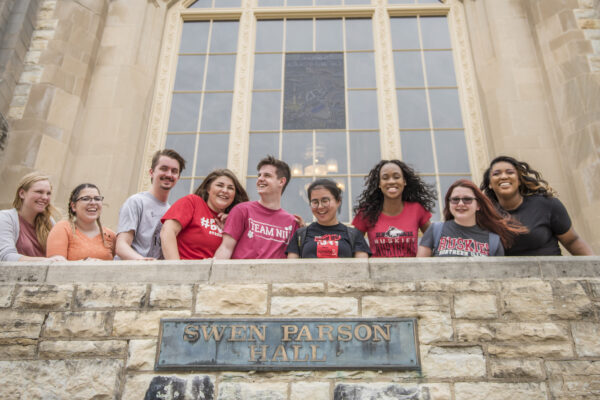By Stephanie L. Sanders
The National Center for Institutional Diversity at the University of Michigan interviewed a number of academic diversity officers (ADOs) to learn more about how they view their role. Results from this study were published last fall. In this new blog series, ADOs and other senior leaders discuss the role, the challenges ADOs face, and the opportunities these positions bring to college and university campuses.
Higher education has no shortage of statistics that show a steady uptick in enrollment numbers for underrepresented students and students of color. It’s not uncommon for institutions of all types to boast about their commitment to diversity and reference these same admissions numbers. However, enrollment numbers are poor metrics for understanding how the process of inclusion unfolds. Anyone interested in fostering welcoming spaces for all students, including underrepresented students and students of color, should shift their preoccupation with numerical diversity toward that of inclusion.
Inclusion from the inside
I am an academic diversity officer and a woman of color who works at the University of Michigan, which is a predominantly white institution. In this context, I’ve learned that creating inclusive classroom spaces, where everyone feels supported and encouraged to voice their opinion, takes time.
Experiencing the fullness of these spaces in real time is quite different than facilitating a professional development session with instructional faculty on how to foster inclusive classrooms. While the former provides a deep understanding of how inclusive classrooms develop over time, the latter resembles a bodega of available options (e.g., setting ground rules, assigning diverse readings, using an inclusivity statement, and getting to know students) that help faculty plan and develop course content.
During my first year as an academic diversity officer, I co-taught a graduate course with a colleague who brought a tremendous amount of experience and knowledge into the classroom. Through this model, I became familiar with planning, delivering instructions, and assessing student work with a partner. During my second year, I co-taught an undergraduate course using the same model of planning, instructing, and assessing. But teaching undergraduates proved to be different from teaching graduate students in a number of ways.
First, the undergraduate students were part of a larger learning cohort where the goal was to create a shared learning experience for students with a similar interest (i.e., policy). Next, I had to think through effective teaching strategies that fostered an inclusive space. Because of the large class size, I expected students to interpret and make meaning of the course content in a variety of ways. I knew agreements and disagreements, largely based on social identities and lived experiences, would create tensions and white fragility as well as a call-out culture that challenged the learning community to think broadly about assumptions, blind spots, and potential biases.
Over the past two years, I’ve learned a few valuable lessons at the intersection of diversity and inclusion that remain critical when thinking about the case for inclusive classrooms at predominantly white institutions.
Establish classroom authority
As a woman of color, I experience the academy in a much different way than my white counterparts. In the classroom, my social identity is relevant both to setting an inclusive tone and dealing with the challenges associated with establishing my authority to do so. While research suggests that faculty members with different social group identities experience the academy differently, their responses to these challenges also vary.
One of my personal challenges that resurfaces from year-to-year is related to establishing authority in the classroom. These challenges from students range from misplaced assumptions about subject matter expertise to disrespect, classroom disruption, and disagreement about teaching strategies (e.g., think-pair-share, fish-bowl, reflection journal). To stave off some of the assumptions, I use a few strategies that help me establish and maintain authority throughout the semester.
First, I assert a credible presence by sharing my background (i.e., educational credentials, work experience, and research agenda) during the initial class session. To encourage active versus passive engagement, I move around the classroom during a lecture or group activity. Finally, I take time to know students and address them by name when possible. These approaches set the tone, remind students that they are an integral part of the learning community, and allow them to get to know me.
I’m sure we all have examples of how we establish authority in the classroom. What works for one person may not work for another. Neither can we accurately predict what works when fostering inclusive classrooms. Trial and error are definitely part of an ongoing process of becoming a skilled facilitator while listening and responding to the needs of students.
Manage tensions and resistance
It’s common to hear students say they welcome different opinions to help broaden their perspectives. This is usually a collective sentiment at the start of any semester, especially when the stakes are low and the learning community is still forming.
However, as the semester progresses and the stakes increase, the cohort style of learning can produce a few unintended consequences if left unmonitored. While this model has a range of positive learning outcomes, it fails to consider the social identities of members of the in-group (included) or out-group (excluded) as they contribute to the discussion.
Similar to the importance of an instructor establishing authority in the classroom, students also perform under the weight of establishing their presence and voice in the community of learners. And like any community-building effort, tension and resistance are part of the process. In inclusive classrooms, these tensions and resistance show up in a number of ways. Students may:
- Self-segregate in search of affirmation and solidarity.
- Remain fixated on being socially conscious or “woke” about current affairs.
- Call out peers who appear to have a narrow view of content material.
- Self-censor or remain silent to avoid unwarranted attention, especially if they have a minority or dissenting opinion.
The tensions and resistance are not solely the result of a cohort-style learning model. They are also a byproduct of what happens when we intentionally include perspectives of those who experience the world differently from their peers. I recommend two strategies for navigating these tensions:
Be explicit with students about what to expect in an inclusive space. At times, this means recognizing a range of emotions—including comfort-discomfort, affirmed-challenged, and argumentative-silent—and responding to them differently. When climate concerns are dismissed for the sake of just focusing on course content, we miss the chance to nurture interpersonal relationships and build an academically rigorous classroom environment. Rather than shying away from a display of charged emotions, instructors should acknowledge their existence and provide a useful framework that help learners identify, manage, and navigate these and related tensions.
Focus on skill development. It’s always a good idea to use a collective set of agreements that make group norms about classroom interactions explicit (e.g., listening respectfully, turn-taking, and critiquing ideas and not individuals). These and similar agreements are useful, especially when discussing controversial topics.
Rather than isolate these agreements to one setting, semester, or class, be clear with students about how these skills develop and grow over time and across different context. For instance, effective communication (e.g., using active listening, taking time for reflection, asking questions, showing empathy and respect, and understanding nonverbal cues) is a useful skill that transcends classroom discussions on hot button issues.
In the larger context, mastery of this skill enhances leadership development, builds better teams, and is useful when leading organizational change or change management. Both agreements and skill development can serve as a scaffold that allows students to acquire new information and perspectives, synthesize content beyond rote memory, and discharge tensions in real time.
Establishing authority, managing tensions, and designing teaching strategies are all important when creating inclusive spaces. This is a shared responsibility between the instructor and the community of learners. When thoughtfully managed, these spaces serve as incubators where students actively engage with one another alongside various perspective and tensions, develop transferable skills, and experience a sense of belonging where their contributions—whether informed or developing—matter. When students understand how course material fits together in a meaningful way, it enriches their overall educational experience.
If you have any questions or comments about this blog post, please contact us.


